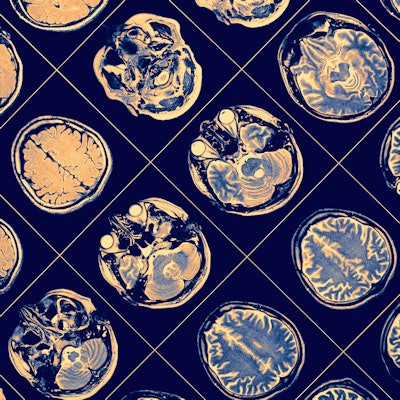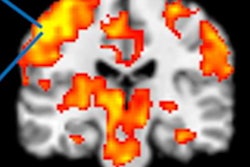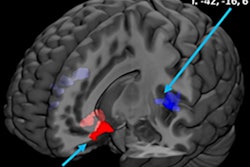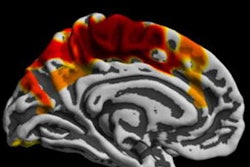
Brain MR images have revealed large amounts of gray-matter volume in 14-year-olds who eventually go on to increase their alcohol consumption by age 19, according to a study published online July 2 in eLife.
The findings could help reveal why some teens are prone to developing alcohol use disorders. Discovering this anomaly in an individual's early teen years also could help identify who might be at greater risk and prompt early interventions to curb the issue.
"We observed that higher gray-matter volume in bilateral caudate nucleus and in left cerebellum at age 14 years was associated with a stronger increase in alcohol use scores," wrote the researchers, led by Simone Kühn, PhD, professor of neural plasticity at the University Medical Center Hamburg-Eppendorf in Germany. "This finding fits well to previous studies pointing at an association between increases in striatum and psychiatric disease."
The researchers analyzed brain MR images from 1,814 healthy 14-year-olds participating in the IMAGEN project -- a European research project designed to explore biological, psychological, and environmental factors during adolescence that could influence brain development and mental health. They then compared the participants' self-reported drinking habits at ages 14, 16 or 17, and 19.
The MR images showed that teens with more gray matter in the caudate nucleus, which is associated with learning, and the left cerebellum, which handles thinking and movement, were more likely to increase their drinking habits over time.
Similar brain differences have been found in adolescents who progress to psychiatric disorders later in life. Debate still remains about how and why this happens. One school of thought is that gray matter expands through childhood and then peaks during adolescence, when unnecessary brain connections are "pruned away."
"Our finding may reflect a deceleration of pruning or an overproduction that surpasses the normal developmental overproduction of synapses," the researchers wrote. "Future research with repeated neuroimaging measurements is needed to solve this neurodevelopmental question."


.fFmgij6Hin.png?auto=compress%2Cformat&fit=crop&h=100&q=70&w=100)





.fFmgij6Hin.png?auto=compress%2Cformat&fit=crop&h=167&q=70&w=250)











